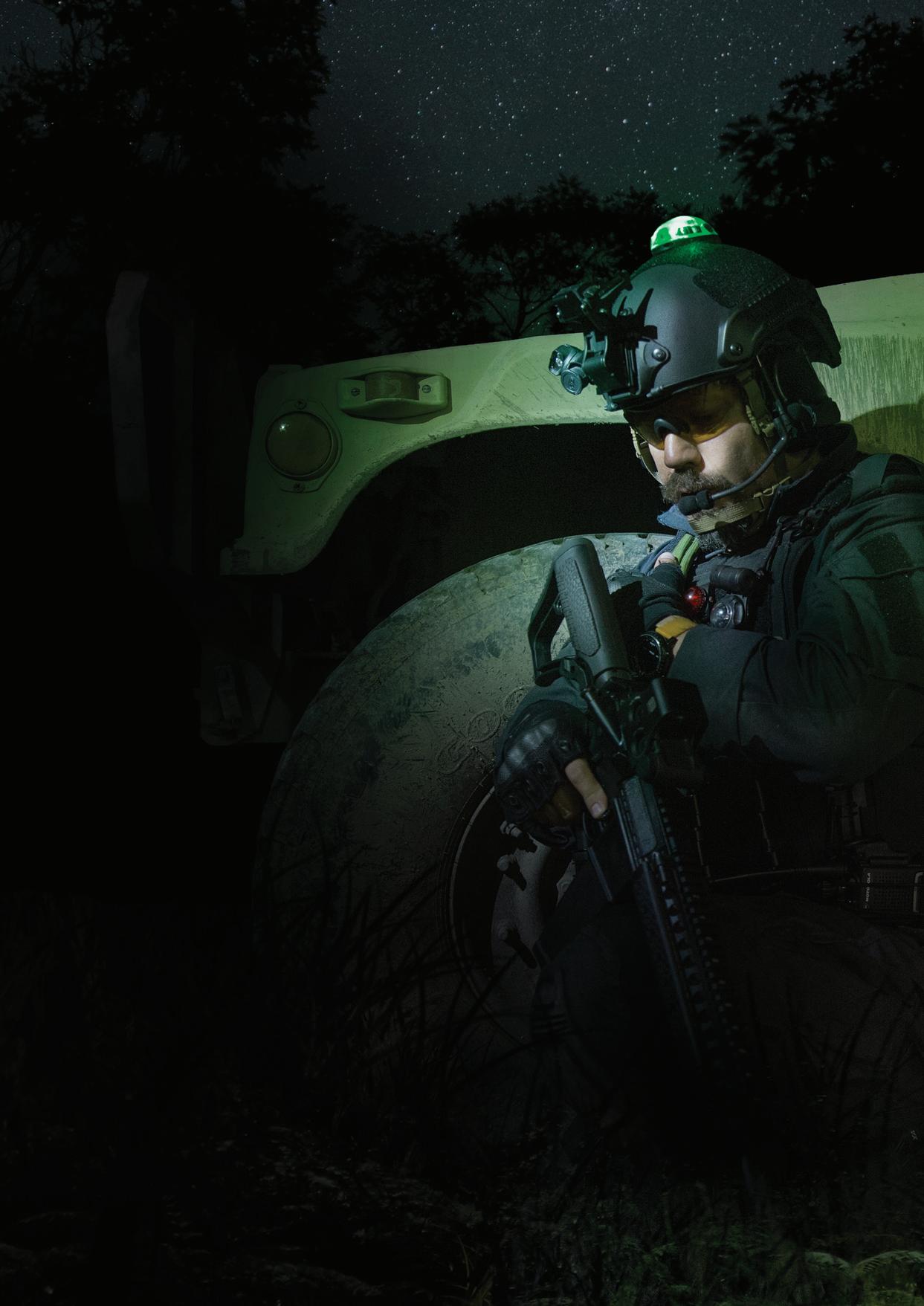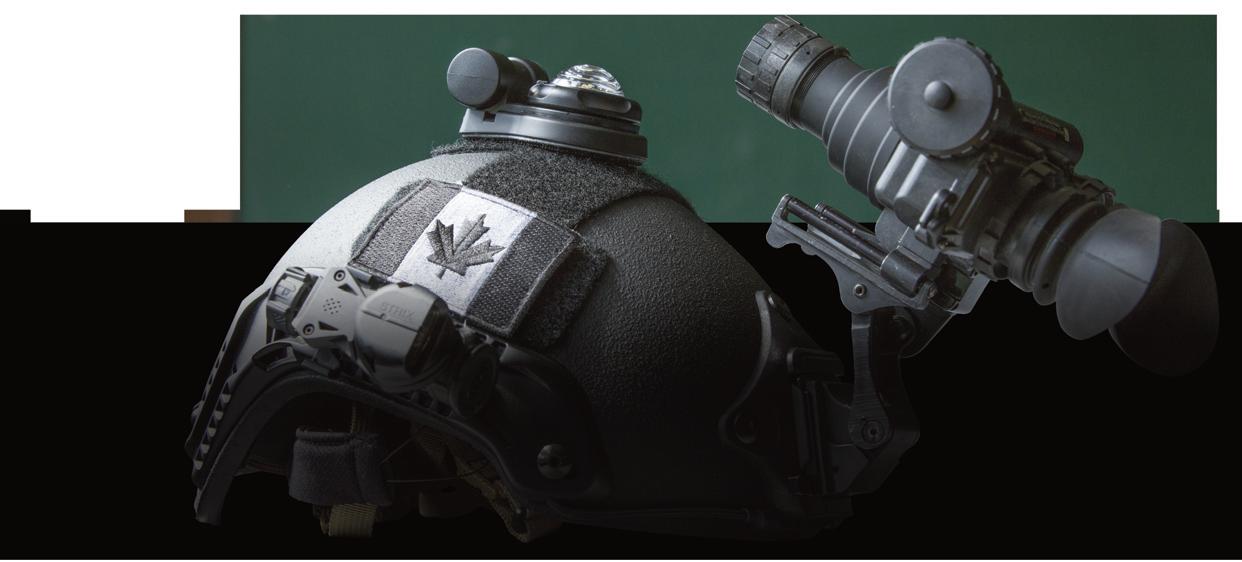
3 minute read
30 years of innova�on at Chess Dynamics

By David Tuddenham, Managing Director at Chess Dynamics
Innova�on has always been at the heart of everything Chess Dynamics does, and, in many ways, it is a founding principle of the business. As we celebrate our 30th anniversary this year, I’ve been looking back at some of the major milestones throughout Chess’s history, and it’s clear to see how that ethos of innova�on has not only guided our business, but also shaped defence technology more broadly.
Chess is now well-known in the defence and security sectors as a specialist in surveillance and 昀re control, but there are fundamental technologies that have underpinned our success along the way.
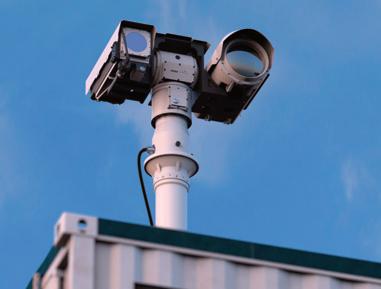

30 years ago Chess was founded on the ability of our sensor posi�oners that enabled pla�orms to pinpoint targets with a high level of precision and accuracy. Where sensors needed to be stabilised to hold on to a target, Chess developed the technology to make that possible. This was the 昀rst example of the business developing genuinely ground-breaking technology which s�ll supports our solu�ons today.

We also pioneered an innova�ve approach to how sensors are mounted onto a system, countering the prevailing ‘ball-type’ design This means sensors can be easily swapped out so the operator can maintain the availability of the equipment, rather than having to deal with long periods of down�me. Modularity is now central to how forces operate, but Chess has been using the approach for many years.
Turning our a�en�on to the present day, through our Vision4ce business Chess has been using AI in tracking algorithms to enable difficult target tracking of fast-moving objects in clu�ered environments. Our leading surveillance solu�ons are a real step-changeacquiring, reacquiring and classifying threats with limited user involvement, aler�ng operators of poten�al threats.
These pioneering technologies have driven the success of Chess Dynamics, but there is also a genuinely innova�ve approach to the way we work.
Solu�ons first
Our R&D process has always been based on iden�fying innova�ve solu�ons to address a customer need. It’s only through collabora�on with customers that we can truly meet their real-world requirements. Throughout 30 years of business, Chess has seen customers as ‘partners’, which has led us to taking on some challenges that other manufacturers may not.
This spirit of collabora�on goes further. Our partners are not only in the defence sector, but crucially also the commercial space. In the past few decades, commercial technology has advanced far more rapidly than in defence, and Chess has always explored how we can adopt and enhance this technology to develop defence capability. New sensors or lightweight materials can provide agility and forward-thinking solu�ons for our partners, and we are always trying to bridge the gap between developments in the commercial and defence worlds.
Role of the SME
As a small or medium-sized enterprise (SME), Chess does have the advantage over some larger organisa�ons in that we have the flexibility to pivot to our customers’ needs. Where threats have emerged rapidly, Chess has been there to develop solu�ons at pace to improve capability for the operator. Our innova�on actually supplements those larger organisa�ons working through big R&D programmes to ensure that solu�ons can be tailored to evolving threats.
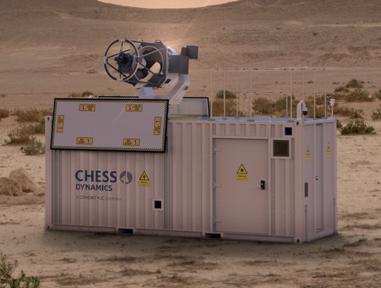
The next 30 years

We’ve come a signi昀cant way over the last 30 years, but when I look towards the future, the possibili�es are staggering.
We’re o�en asked about the impact of advanced technologies such as AI and machine learning. The truth is that we are already working with these technologies. AI is powering our target tracking capability and it’ll only get more advanced.
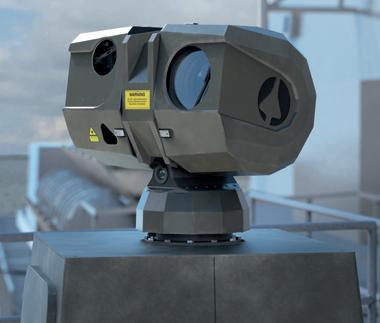
But the real change will be in how evolving technology impacts our business prac�ces. How can we make technology available quicker, and how can we ensure we use our innova�on to respond more rapidly when threats rapidly evolve? These ques�ons will be key in de昀ning the success of the defence technology sector, and I for one can’t wait to see where Chess is in 30 years’ �me.
Learning and adap�ng
Because flexibility powers our innova�on, we have to be across the latest trends in defence and security to understand those evolving threats and requirements. The current conflict in Ukraine is a prime example.
The war has, so far, been driven by technology. For example, the success of fast and agile drones has pointed to the need for counter-drone or counter-unmanned aerial vehicle (C-UAV) technology. The window for tackling treats gets con�nually shorter and forces need the solu�ons to support them.
Looking further down the line, availability is likely to be the key issue for forces. It’s no longer sufficient to rely on air dominance; forces must consider how they can deploy capability quickly to have the maximum effect. Fewer but more capable pla�orms are likely to eclipse larger capacity fleets, so the importance of modularity once again becomes clear.

